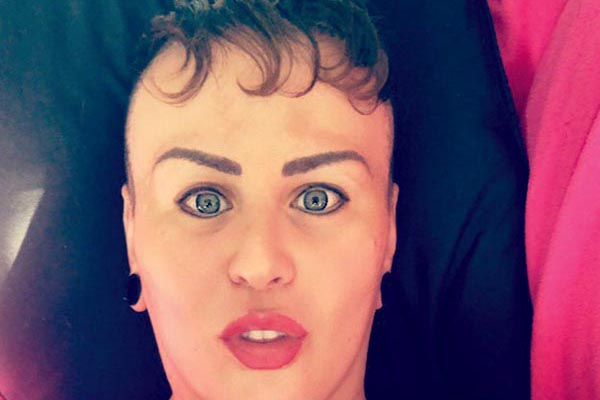 Lions and Tigers and Bears, Oh My! By Ms Sugar Swan
Lions and Tigers and Bears, Oh My! By Ms Sugar Swan
The Munchkins, a good witch, a wicked witch, and ruby slippers. A yellow brick road, a paradise, an all-seeing entity that can grant us that which we are lacking. We all know the story, we can all relate. As a lifelong ‘friend of Dorothy’ I have always felt close to this story, and in this month’s ‘Bears’ edition of Gscene, its narrative is one that mirrors many aspects of LGBTQ subculture.
Just as our young protagonist, Dorothy Gale, a scared, confused girl sung of a place where dreams really do come true, when we find LGBTQ subculture that works for us, we can often feel like we have found our very own somewhere over the rainbow. After a lifetime of being told that we’re too tall, short, fat, thin, femme, butch or awkward to fit in anywhere else, queer culture finally feels like a place where we belong – but what happens when that place no longer feels that you belong to it? This is where the intersectionality of being seen transitioning from bear to trans woman clashed.
For many years I did a relatively good job of hiding my gender underneath a bear costume, but that’s all it was for me, a costume. I grew in a huge beard, my tall, wide frame lent itself to a belly and plenty of muscle which I adorned with tattoos, a chest pelt and my pathetic wisps of hair that remained from my male pattern baldness, wet shaved, completed the look. It was a good look on me. I fitted in, it was comfortable and I was deemed a very attractive bear – there was only one problem, I wasn’t one.
The bear scene turned out to be a very unhealthy place for me. The type of masculinity portrayed in bear subculture was one which was really quite toxic to me. I was praised for a set of physical attributes, attributes that I had carefully cultured, but unfortunately were a hiding place for me. Instead of being a place that I felt at home, that I belonged, the bear label soon became a prison to me.
When I first came out as non-binary and started presenting as a femme bear, albeit still with the beard and chest hair, but in makeup, I started to get the side eye. I was no longer conforming to a rigid stereotype of what a bear was, and the subculture didn’t like that. I was told, many times, directly to my face and online that I was ‘losing my bearishness’ and that was something negative.
When I started to wear breast forms, I think, that was the straw that broke the bear’s back. I was no longer made to feel welcome as part of this community. It struck me as most strange at the time as by its very definition the bear subculture is one that understands what it’s like to be rejected by the mainstream LGBTQ culture and I’d hoped for a little more understanding, however I was not afforded it.
As I moved across from my non-binary femme identity to that of a binary woman and I began my hormonal and surgical transition, the beard went and the facial surgery came, the chest hair went and my breasts came, and the hair surgery brought back my (goldie) locks. I shed the muscle that I’d worked so hard to hide behind and my belly started to roll into my new-found hips, and as time elapsed I looked less and less like a bear.
With the passage of time, I’m now able to go for a drink on the bear scene without the hostility I was once met with. This begs the question: Why? Why am I accepted now but I wasn’t then?
After a lot of consideration and discussion I’ve come to the conclusion that I’m now seen as the female friend of a bear rather than someone trying to be part of the community – and a friend of the scene is something they can get their heads round whereas a trans feminine bear was something they made very clear to me they would not.
This saddens me and I would have hoped for more tolerance and understanding around this, for if bears did not feel oppressed by mainstream LGBTQ culture there would be no need for events like Brighton Bear Weekend.
So it had been made very clear to me that a trans feminine bear was not something that would be tolerated (apart from the beautiful Brighton Muscle Bear who still kisses me with as much gusto and excitement under his kilts as he did 10 years ago, you know who you are), but how would the trans masculine be tolerated?
I spoke to a range of trans masculine bear-identifying people and they had very mixed experiences to report. Some trans men who identify as bears say they have to fight hard for their place in the community and despite their beard, their shaved head, their tattoos and their chest hair, having a vagina seems to disqualify them. This is disappointing to hear but not exactly surprising.
It’s counteracted somewhat though by friends of mine who feel that the Brighton bear scene, at least, does not exclude them solely on account of being vagina owners. They tell me that bears understand what it feels like to be excluded and to be pushed aside for someone younger, fitter and adhering to the white, hairless, tanned, muscle guy we see on flyers for most gay male events. This acceptance at the intersectionality of trans men and bears brings me hope for the joined future of all LGBTQ subcultures.
I wish all you bears out there a very Happy Brighton Bear Weekend and I hope that somewhere your dreams really do come true.
















You must be logged in to post a comment.